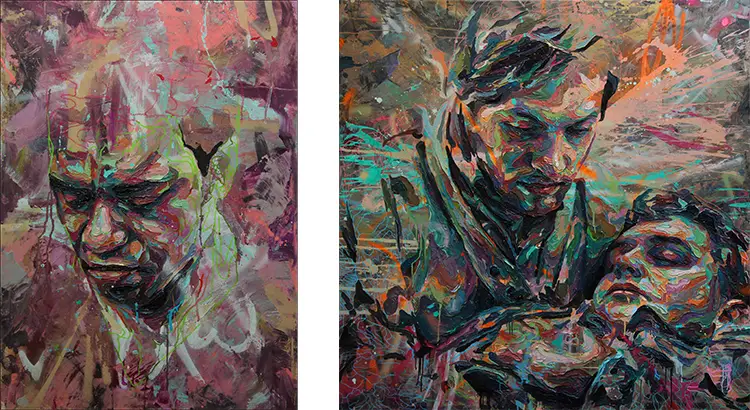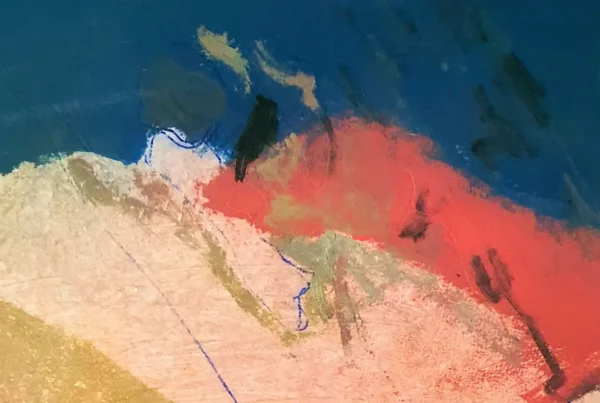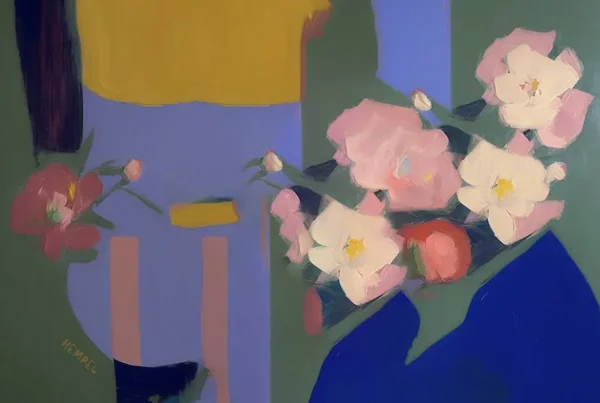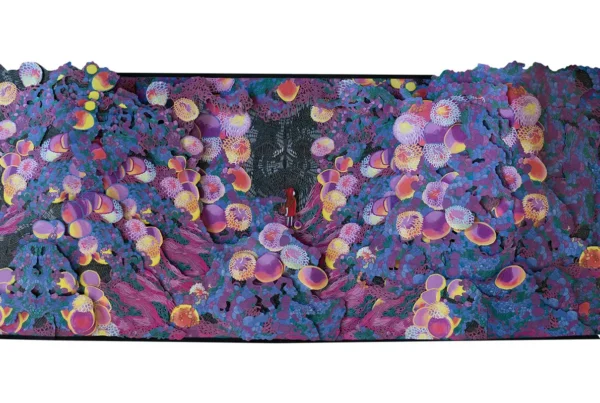“The recognition from that prize became the foundation of my art career and led to numerous exhibitions across Australia.”
Painting the Unspoken: Where Emotion Meets Texture
Joshua Miels stands out in contemporary portraiture not simply for his technical ability, but for the emotional gravity that emanates from his heavily textured oil paintings. Working primarily with palette knives and subdued color palettes, Miels captures faces not as likenesses, but as emotional mirrors. Each work is a quiet confrontation, an invitation to engage with vulnerability, fragility, and the complex narratives people often keep hidden. His subjects are often anonymous, gazing outward with a blankness that paradoxically reveals everything. These figures exist in a space between recognition and mystery, inviting the viewer to reflect inward as much as outward.
The emotional core of Miels’s practice is deeply personal. His father’s struggles with mental illness and addiction shaped not only his understanding of human fragility but also his motivation for creating art in the first place. Painting became a way to process an upbringing marked by confusion, pain, and the relentless pursuit of understanding a loved one’s inner turmoil. This background informs every brushstroke and cut of the palette knife. Miels doesn’t just depict faces—he reveals the weight they carry. Through this, he offers both an homage to those fighting invisible battles and a therapeutic avenue for his own reconciliation with the past.
One of the most significant manifestations of this personal connection is his early work titled Fight Back, a portrait of his father painted during his time in rehab. Although galleries initially overlooked his work, this piece marked a turning point in Miels’s career after it was accepted into one of Australia’s most prestigious art prizes. Tragically, his father passed away before he could witness this milestone. Yet, Fight Back became the foundation upon which Miels built his professional life. The painting, steeped in emotional history, became a vehicle for public recognition and ongoing exhibitions. It remains a deeply cherished testament to a complicated love and a pivotal moment in his evolution as an artist.
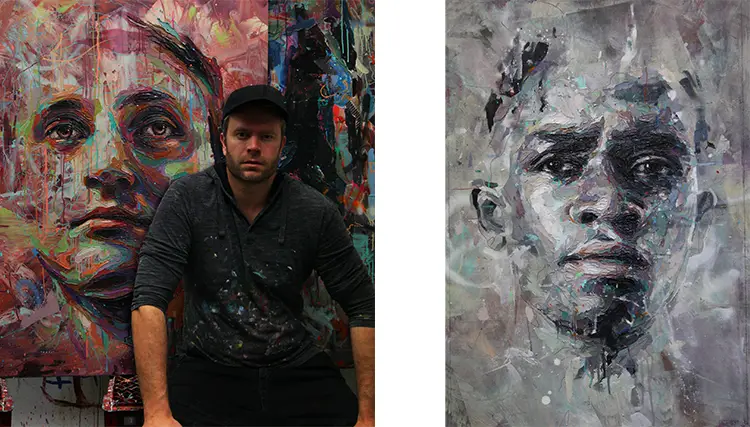
Joshua Miels: Reimagining Identity Through Impasto
Miels’s artistic style is unmistakably his own—a contemporary take on impasto painting that turns oil paint into sculpture. With the use of palette knives, he creates thick, layered surfaces that transform light into an active element within the portrait. This texture is more than aesthetic; it becomes a language of emotion. The marks are raw, assertive, and deliberate, echoing the psychological weight behind the faces he renders. The result is a kind of emotional excavation, a stripping away of pretense that invites intimacy between subject and viewer.
Central to Miels’s work is the idea of removing the façades people present to the world. In his portraits, he captures a moment of stillness when social performance slips away and what remains is unfiltered humanity. The expressionless gazes of his subjects are not empty—they are searching, layered with meaning, and confronting. Miels believes that solitude allows authenticity to surface, and through his art, he seeks to depict individuals in that raw state. These pieces are less about aesthetics and more about psychological resonance. They ask viewers to sit with discomfort, to recognize parts of themselves reflected back.
A series that exemplifies this pursuit is Social Discount, in which Miels paints individuals absorbed in isolation despite being surrounded by others in public spaces. The series critiques how technological advancement has paradoxically bred disconnection. As someone who has experienced the alienation of remote work despite a naturally social disposition, Miels translates that unease into visual form. Through this body of work, he not only documents a cultural shift but also encourages dialogue about the cost of digital convenience. Each painting becomes a meditation on loneliness, community, and the silent spaces we occupy in a hyperconnected world.
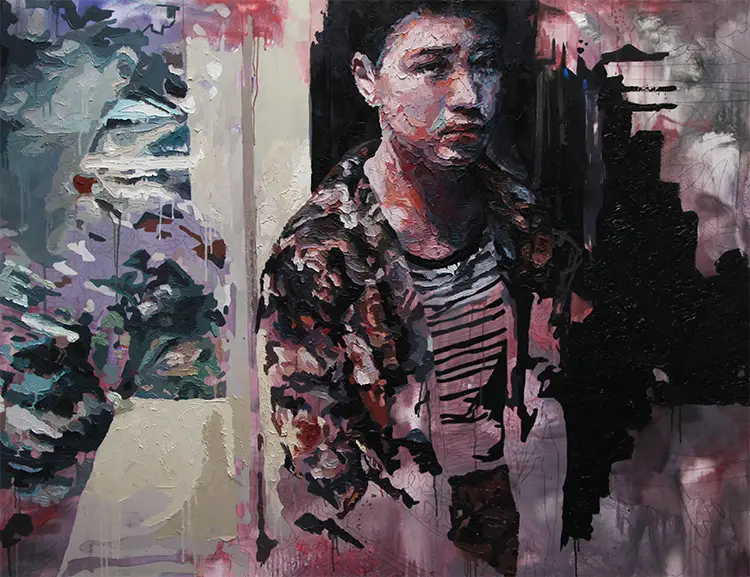
In Between Sessions: The Studio as Both Haven and Challenge
Creating emotionally driven work requires an environment conducive to concentration, reflection, and experimentation. Miels’s studio, though located in his home, is finely tuned to meet these needs. Proper lighting is essential due to the depth and dimension of his impasto surfaces, and he prefers overhead illumination to monitor how light and shadow interact with the textures. His mixing process is equally important, facilitated by a large sheet of glass that allows for efficient preparation of paint. These practical elements are foundational, but so too are the inspirational ones—art books line the space, offering him a gateway to different techniques and voices when creative blocks arise.
Balancing studio time with family responsibilities presents an ongoing challenge. Rather than resisting this tension, Miels has adapted his creative process to accommodate it. He works in brief, intentional sessions, often starting with just half an hour to build momentum. This flexible rhythm allows him to maintain focus without needing prolonged periods of isolation. The interruptions, rather than hindering his output, offer fresh perspectives when he returns to a work-in-progress. This incremental approach has organically shaped the structure of his paintings, allowing for deep focus on small details, such as a single eye, before stepping away.
Interestingly, this rhythm has influenced his painting technique itself. Each session becomes a micro-study, a moment to refine emotion and texture with care. The necessity of pausing and resuming helps him catch errors and make adjustments before the oil paint sets. It’s a slower pace, but one that suits both his artistic aims and personal life. The physical limitations of palette knife work and the drying time of oil paint align well with this stop-and-start approach. In many ways, the constraints of his environment and lifestyle have contributed to the development of a distinctive visual language that prioritizes emotional depth over speed or output.
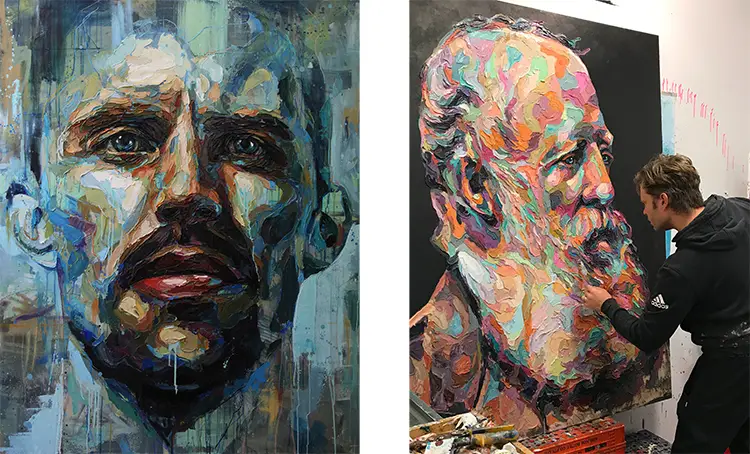
Joshua Miels: Drawing Influence from Brutal Honesty
The visual and thematic vocabulary of Miels’s work owes much to the artists who shaped his early understanding of creative expression. Otto Dix, the German painter known for confronting the violent undercurrents of society, made a significant impact on Miels’s worldview. Dix’s unflinching portrayal of war’s psychological and physical aftermath, combined with his use of distortion and surreal detail, showed Miels that art could operate as a form of moral documentation. This encounter helped him realize that painting was not only a medium of beauty but also a platform for addressing the darker aspects of human experience.
Another powerful influence came through Guy Denning, whose emotionally charged portraits and use of rough, expressive texture resonated deeply with Miels. Denning’s fusion of classical and urban aesthetics, along with his openness to mixed media, provided a roadmap for exploring both material and subject matter with courage. Miels credits Denning with expanding his understanding of how paint could function—not just as a surface treatment, but as a visceral tool for communication. This inspiration encouraged him to experiment more boldly with palette knives, pushing the emotional charge of every mark he makes.
Jenny Saville rounds out this triad of formative influences, bringing a sense of scale and unapologetic boldness to Miels’s frame of reference. Her unidealized depictions of the human body challenged notions of beauty and identity, offering Miels a powerful example of how representation can be both confrontational and deeply compassionate. Her commitment to the raw physicality of the human form emboldened him to move away from traditional portraiture and embrace a more intuitive, expressive approach. Saville’s work underscored the idea that emotion and imperfection are central to truth, a concept that continues to underpin Miels’s practice across all his projects.
